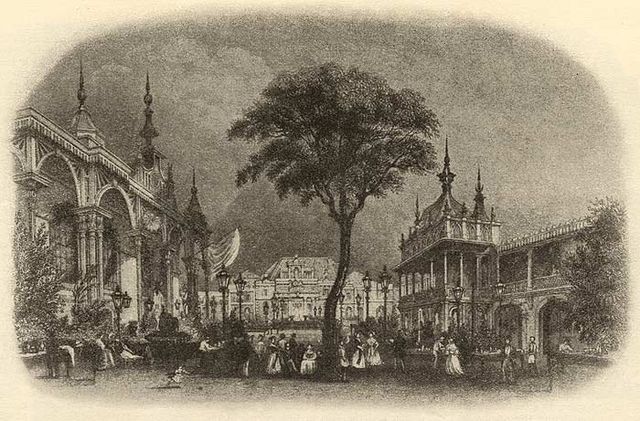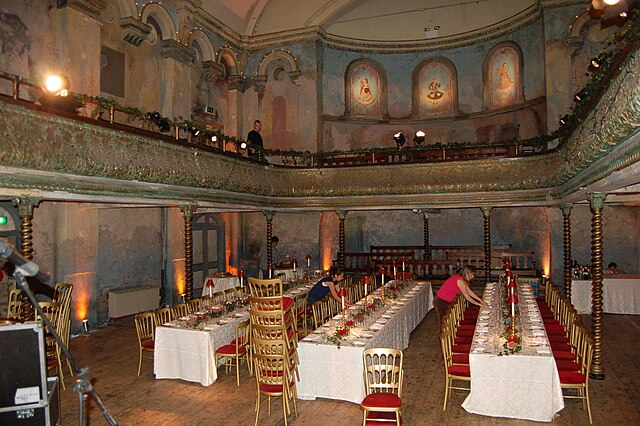Alhambra Theatre of Variety
The Alhambra was a popular theatre and music hall located on the east side of Leicester Square, in the West End of London. It was built originally as the Royal Panopticon of Science and Arts opening on 18 March 1854. It was closed after two years and reopened as the Alhambra. The building was demolished in 1936. The name was also adopted by many other British music hall theatres located elsewhere; in Bradford, in Hull and in Glasgow etc. The name comes from association with the Moorish splendour of the Alhambra palace in Granada, Spain.
The Alhambra Theatre dominated Leicester Square in 1874
Jules Léotard, The Daring Young Man on the Flying Trapeze, performed his aerial act at the Alhambra.
Music hall is a type of British theatrical entertainment that was most popular from the early Victorian era, beginning around 1850, through the Great War. It faded away after 1918 as the halls rebranded their entertainment as variety. Perceptions of a distinction in Britain between bold and scandalous music hall entertainment and subsequent, more respectable variety entertainment differ. Music hall involved a mixture of popular songs, comedy, speciality acts, and variety entertainment. The term is derived from a type of theatre or venue in which such entertainment took place. In North America vaudeville was in some ways analogous to British music hall, featuring rousing songs and comic acts.
The Eagle Tavern in 1830
The Oxford Music Hall, c. 1875
The interior of Wilton's Music Hall (here, being set for a wedding). The line of tables give some idea of how early music halls were used as supper clubs.
Interior of the Canterbury Hall, opened 1852 in Lambeth





